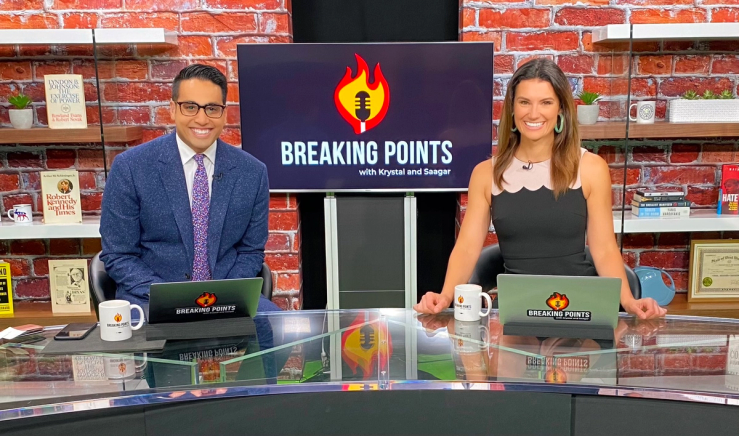The News
Some of the most listened-to podcasts in America are struggling to sell ads as the audio business shifts toward the vast, mostly independent, “mid-tail.”
The New York Times has shipped episodes of the paper’s flagship show The Daily in recent months without a full slate of paid advertisements, opting to air promotions of other Times content or podcasts.
A Times spokesperson said that The Daily has never run without any ads.
The paper isn’t alone in its fight to keep rates up as top prices decline. Some shows in the iHeartmedia slate —like Black Effect and My Cultura — have also run without a full slate of paid ads in recent months, as iHeart continues to pursue large seven-figure advertising deals for the whole group with mixed success.
“The general trend you describe with the Daily has played out for our big shows at the top of the year, though there seems to be some better momentum month over month,” one audio executive from iHeartmedia told Semafor.
Max’s view
The podcast industry is in the midst of a deep transformation, away from expensive brand-name programming and back toward its roots in a wider array of, mostly, talk shows.
Spotify recently cut its massive podcast spending, and Sony also confirmed to me that it is scaling back its nonfiction narrative podcast ambitions.
But top ad executives say that despite a pullback in ad spending across digital media, podcast ad spending will increase this year, with the majority spent on shows airing on Spotify, YouTube, and Apple. The Interactive Advertising Bureau said last year that the largest growth in advertising over the past several years has been in advertising categories with lower advertising spend, many of whom are advertising on lesser-known podcasts with hyper-focused audiences.
As was the case when Substack began to peel off columnists and writers from traditional news organizations, this shift in the podcast market has benefited creators and smaller media companies who offer cheaper ads directed at specific listeners.
One case in point: Saagar Enjeti and Krystal Ball were hosts of a streaming show on the Hill, but left the company in 2021 to start their own media venture, Breaking Points. The show has thrived on programmatic ads, which are increasingly popular among independent podcasters and represent a growing portion of advertising in the podcast space.
“The big guys all live and die by the CPM,” Enjeti said, referring to the pricing of direct-sold advertisements.
Room for Disagreement
Media companies aren’t getting out of the audio business. The Daily remains a uniquely successful force in audio with 4 million daily downloads. And Slate, which stumbled into becoming an audio company ten years ago off the back of its successful Political Gabfest, is using its podcasts to power its membership program at the expense of advertising revenue. The company told Semafor its Slate Plus membership revenue has grown more than 50% compared to last year, driven by an ad-free offering and additional segments.
The View From China
Starbucks just launched a branded show into the world’s second-largest podcast market, with a show that debuted March 1 on Starbucks China’s official WeChat account.
The 41-minute show reportedly “features the coffee chain’s history, the ever-rising nationwide coffee trend, [and] mysterious coffee stories.”
Notable
- Podcasts are still a tiny fraction of the U.S. advertising market. Advertisers spent nearly $70 billion on TV ads last year, compared to just $1.5 billion in podcasts.
- News organizations are failing in their attempts to find audiences for their content on Youtube. While podcasts that include a video component tend to perform better on the video platform, audio-only podcasts from Slate, NPR, and the Times have all garnered low viewership numbers on Youtube.
- Unionized TV writers said this week that in addition to boycotting TV writing, they will not be writing for fiction podcasts during the duration of the ongoing writers strike.


